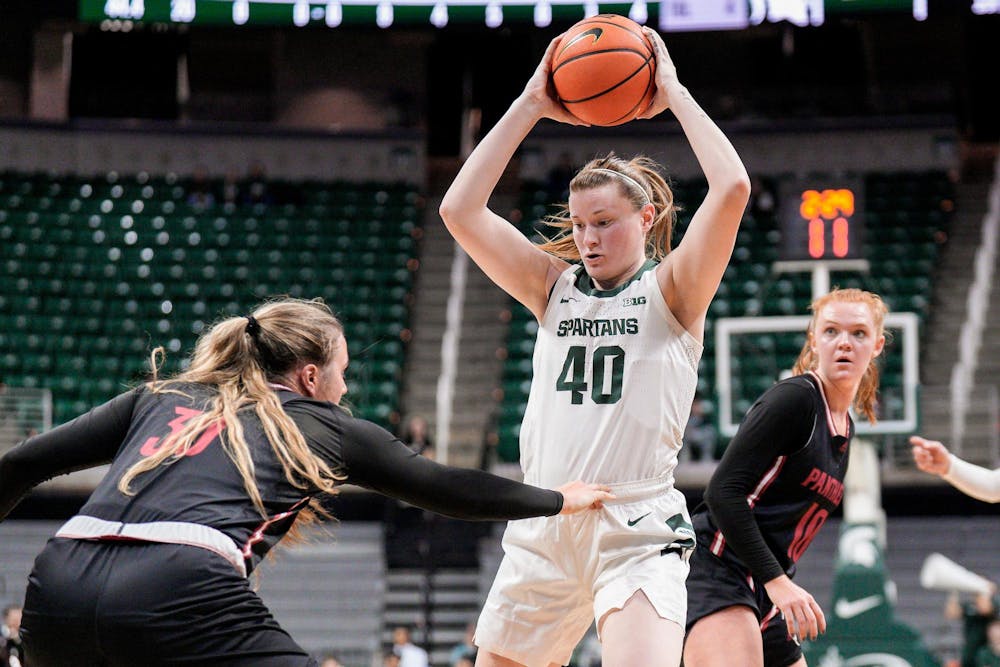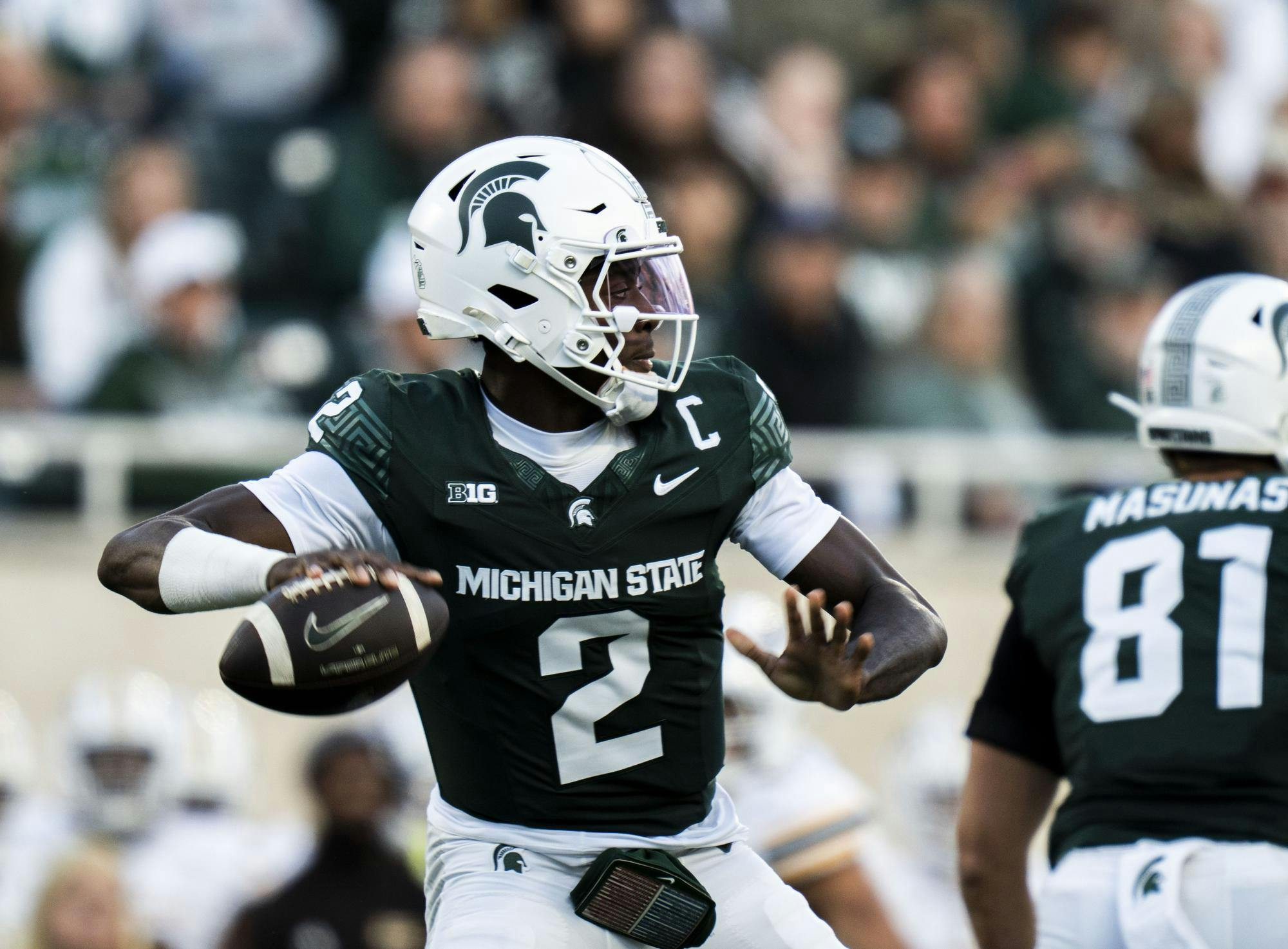The center position in basketball, especially in the Big Ten, can be one of the most physically demanding positions as it typically requires size, strength and knowledge of how to work the paint on both offense and defense.
At the collegiate level, people usually expect someone who averaged 15.4 points per game and 7.3 rebounds per game — eight rebounds per game in Big Ten play — with 65 blocks at the center position to at least have regularly played that position throughout high school.
But believe it or not, that stat line comes from MSU women’s basketball player Julia Ayrault — a guard.
Throughout her basketball career, Julia Ayrault didn’t play center but actually regularly played point guard as a youth, in high school and even in her first years of college.
Playing the center position was something that Julia Ayrault never imagined playing, especially because she is undersized for the position at 6-foot-2 inches. While she is one of the taller players on Michigan State’s roster, she is undersized by two to three inches compared to most of her in-season opponents.
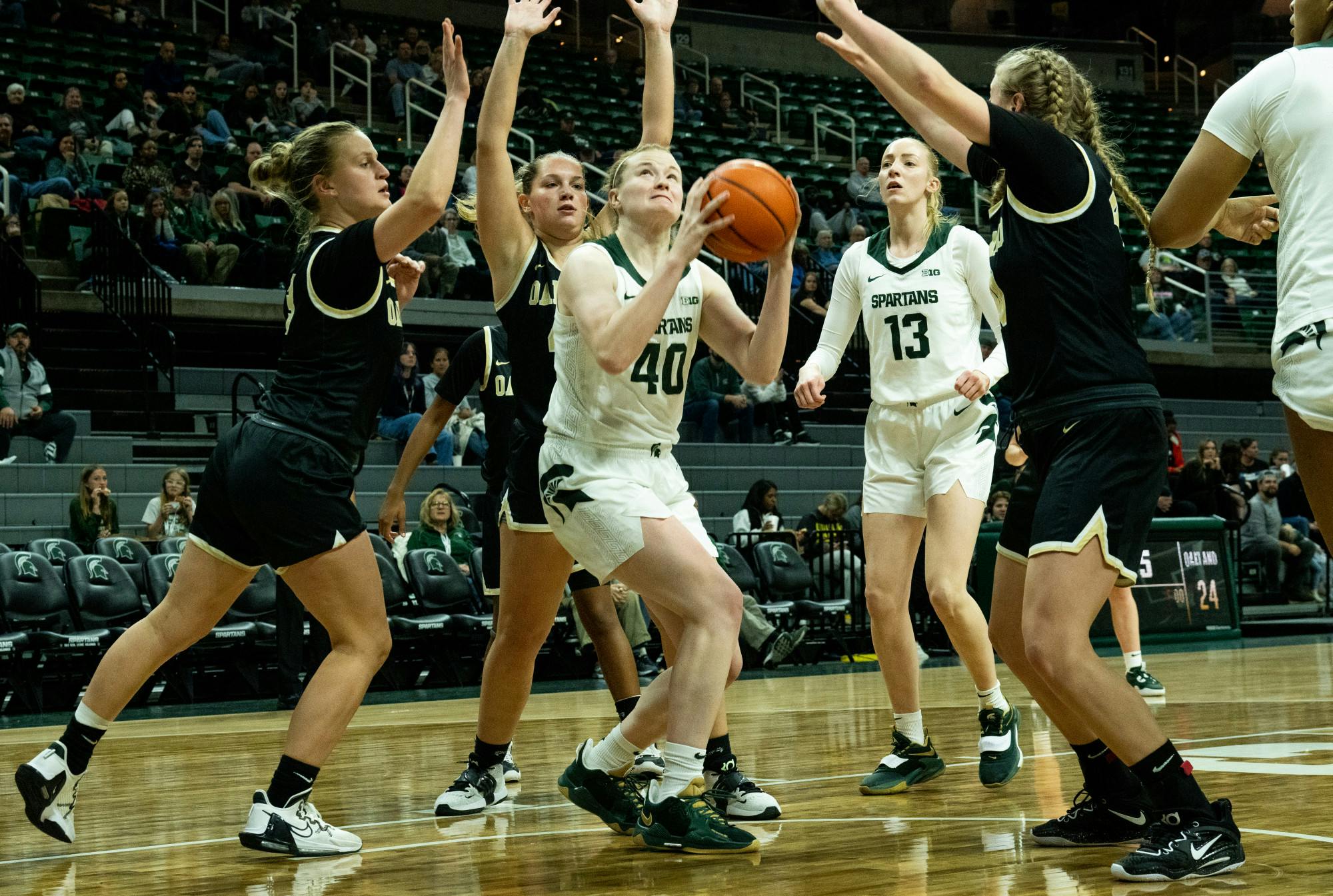
Nonetheless, during the summer before the start of the 2023-2024 season, when junior forward/center Isaline Alexander was placed under concussion protocol, the Spartans and their new head coach Robyn Fralick needed a leader to step up and play center, also referred to as the big position.
Being one of only four players on the team over six feet tall, Julia Ayrault knew that she was going to have to step into the position.
“(Alexander) was off for a while so there was kind of a need for someone to do it,” Julia Ayrault said. “I was like, ‘Why not? Why not until she comes back?’ I was more than willing to try it out.”
After quickly accepting the new role, a new training plan was made for her as she was going to have to learn how to navigate her new position quickly. She remembered the transition being much smoother due to the new coaching staff being brought in with Fralick, whom she was quickly getting to know.
“I think it was definitely hard at first to navigate a new spot, I had definitely done a lot more guard stuff throughout playing basketball so it was new for me,” Julia Ayrault said. “The coaches were willing to just help me learn, grow and get better at it and they reminded me each day that progressively you learn how to do different things that can help you be successful.”
Although the transition to the center position had to be quick, she had already displayed that she could rebound at a high level early on in her basketball career.
In her junior year of high school, Julia Ayrault was already a top-tier rebounder, averaging nearly 11 rebounds as she led her team to a Class A Final Four appearance. During her senior year, the rebounding had dropped a bit but still sat high for a guard at nine rebounds per game.
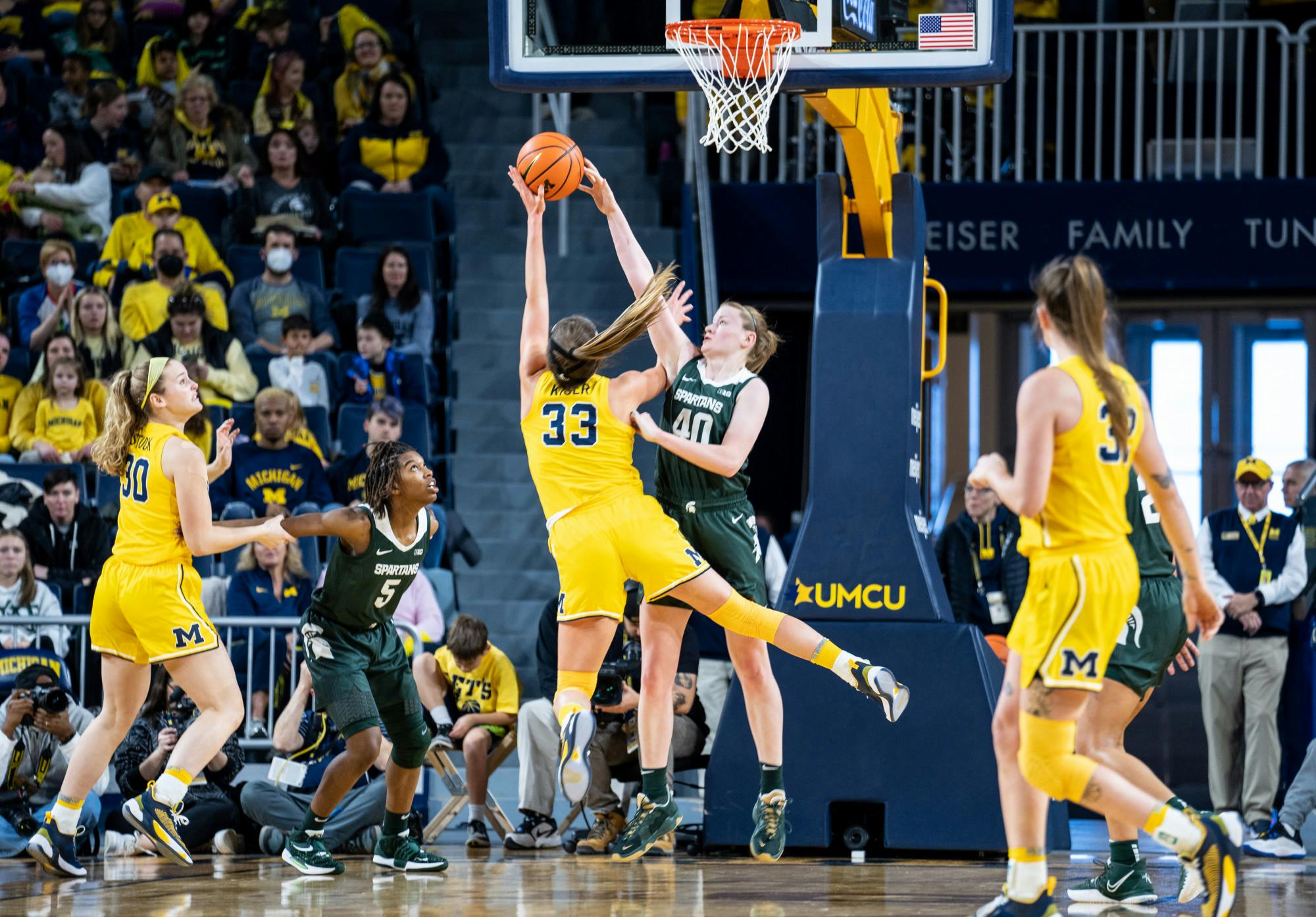
Redshirt junior guard Julia Ayrault (40) blocks Michigan's graduate student forward Emily Kiser (33) during a game against Michigan at the Crisler Center on Jan. 14, 2023. The Spartans lost to the Wolverines 70-55.
In her first two years at Michigan State, her career was still blooming before she was forced to miss the entirety of the 2021-2022 season due to a foot injury.
When she returned her senior year, Julia Ayrault was on a minute restriction, forcing her to trust the restriction, herself and her ability to play, which took a toll on her season numbers. She said that she had a “tough time trusting” the restriction and herself, and that it took a long time for her to “get back into the game” and feel normal, especially on the mental side of the game.
By the time she was heading into her graduate season, Julia Ayrault had already been through a lot basketball-wise. Besides the injury, she had already lived an entire life of basketball as her entire family is full of former and current basketball players, managers and coaches.
Both of her parents, Andy Ayrault and Kimberly Ayrault, played basketball at Wayne State University in the early 1990s and her father is currently an assistant coach at WSU.
Julia Ayrault credits both her mom and dad for the feedback that they have been able to give her throughout her basketball career. The parents also created a non-pressurized atmosphere when it came to basketball, Julia Ayrault said.
“He’s a very positive guy and he’s got a really good outlook on life and he just kind of has a really good ability to talk to me about stuff without making you feel the pressure,” Julia Ayrault said. “That was one of the biggest things I loved about growing up in my family is that there was never any pressure to play or do well. If that was something that we loved and wanted to do, we could, but if not, that was okay too. So I think that really helped too, just growing up and being in that environment was great for me.”
Support student media! Please consider donating to The State News and help fund the future of journalism.
Her parents aren’t the only people to credit for her development, however, as much of her “in-game” experiences at a young age came from playing two-on-two basketball games with her siblings.
Julia Ayrault has a twin brother, Joe Ayrault, and two younger siblings who she would constantly play pick-up basketball games with. Julia and Joe Ayrault had a sibling rivalry when it came to basketball, which ended up helping Julia Ayrault become the poised center she is today.
“It made me better because he is bigger, stronger and faster so he helped me tremendously when it came to learning how to be stronger and learning how to play against someone better than you are,” Julia Ayrault said.
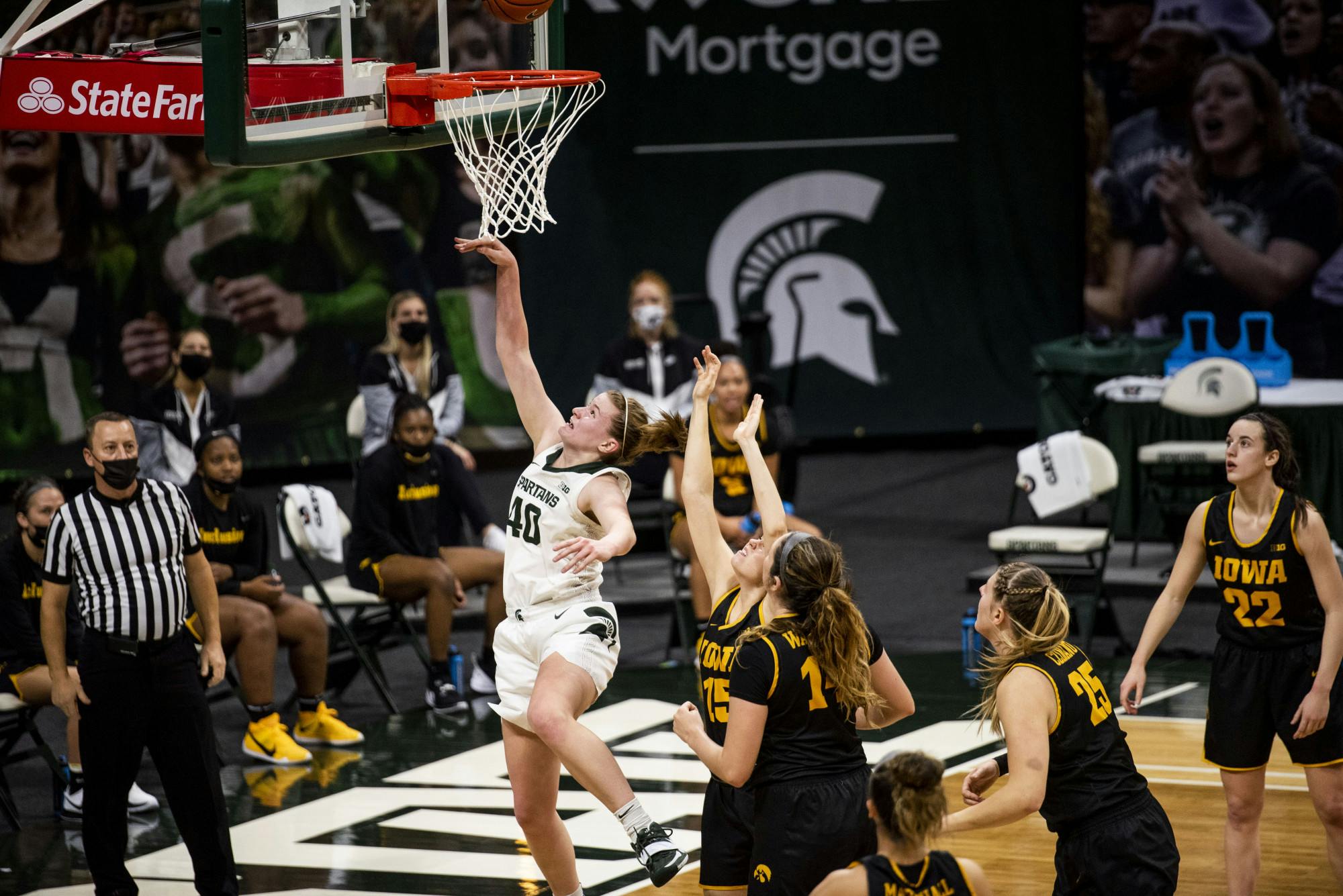
Sophomore guard Julia Ayrault (40) shoots a basket during the game against Iowa on Dec. 12, 2020, at the Breslin Center. The Spartans defeated the Hawkeyes 86-82.
The basketball connection between Julia Ayrault and her brother Joe Ayrault did not end once the two of them got too old to play in the backyard. The twins both committed to Michigan State. While Julia Ayrault would be playing basketball for the women’s basketball team, her brother was close by — quite literally — as he was hired as one of the women’s basketball team managers during his time at MSU.
Although Julia Ayrault was busy with her coaches and the rest of the training staff, Joe Ayrault recalled still being able to rebound for his twin sister during practices and trying to offer her some advice sibling-to-sibling.
“I was able to be around a lot and contribute to the team,” Joe Ayrault said. “We never really planned workouts, but I would rebound for her so she could get extra shots up before or after practice. I would also try to give her suggestions from time to time on things she could try to help her out on the court.”
Joe Ayrault said that a couple of factors contributed to Julia Ayrault’s mental toughness: the two-on-two basketball play in the backyard, but, more importantly, the fact that Julia Ayrault played basketball with other boys — besides her siblings – around her age.
“I think she definitely was more competitive with me because I wouldn’t take it easy on her at all,” Joe Ayrault said. “I didn’t play against her as if she was my sister, I played against her as if she was any other basketball player I would face.”
Joe Ayrault is no longer a team manager as he has moved on to pursue his coaching career, but Julia Ayrault will always continue to use the moments that she and her brother have had together both in the backyard and at MSU as a way to grow as a player.
Julia Ayrault has kept all of her family’s insight as a way to support her mentally through the process of accepting her new position. She believes that keeping a positive mentality has been something that she has continued to try and do throughout this process.
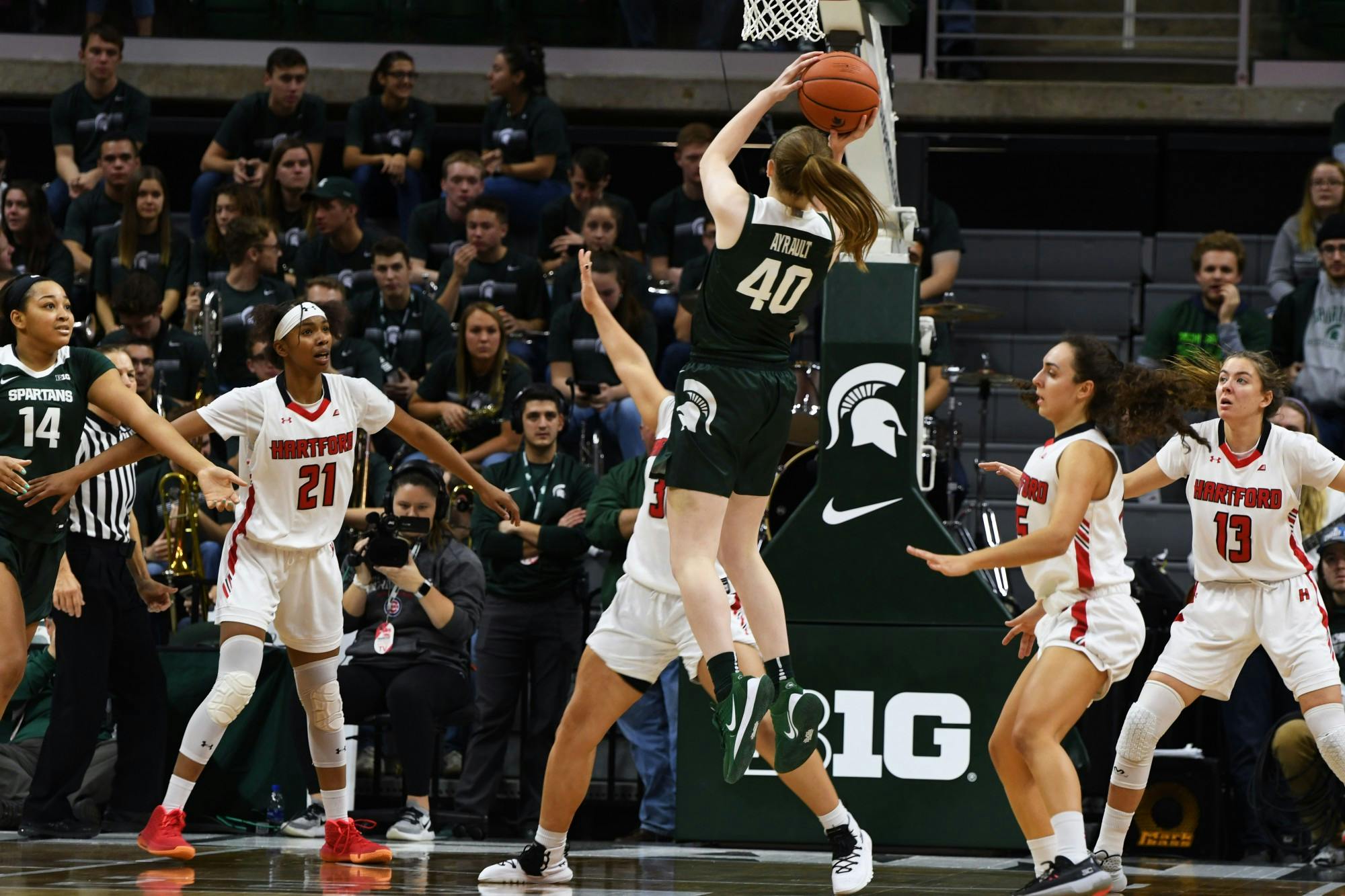
It was early in the position change when Julia Ayrault was given a new way to think about playing the center position by her strength coach Claire Sporer.
“Big is a mindset,” Sporer told Julia Ayrault.
Since then, Julia Ayrault has taken that phrase to heart and used it as fuel during the season to help her and the Spartans in conference play and the NCAA Tournament, among other important games.
“(Claire) talked a lot early on about ‘big is a mindset’ and to me that meant although you might not actually be big, if you think you’re big that can definitely help you get over that mental health part,” Julia Ayrault said. “If I can actually just think that I am bigger than I actually am, I might play that way.”
Although her previous injury slowed her progress down, the position change opened up a new pathway for Julia Ayrault to play at an even higher level than she was able to in the position she was in before.
Julia Ayrault has been able to recognize what this position change could mean for her and the team, but one of the most important aspects of the relationship between her and basketball is the fact that no matter what position she plays, she will continue to try her hardest on the court.
“As long as you’re doing your best, that’s really all you can do and you just go from here,” Julia Ayrault said. “That’s kind of been the outlook this year. I feel like I am trying my hardest because there is not much else I can do but that and we’re continuing to focus on that.”
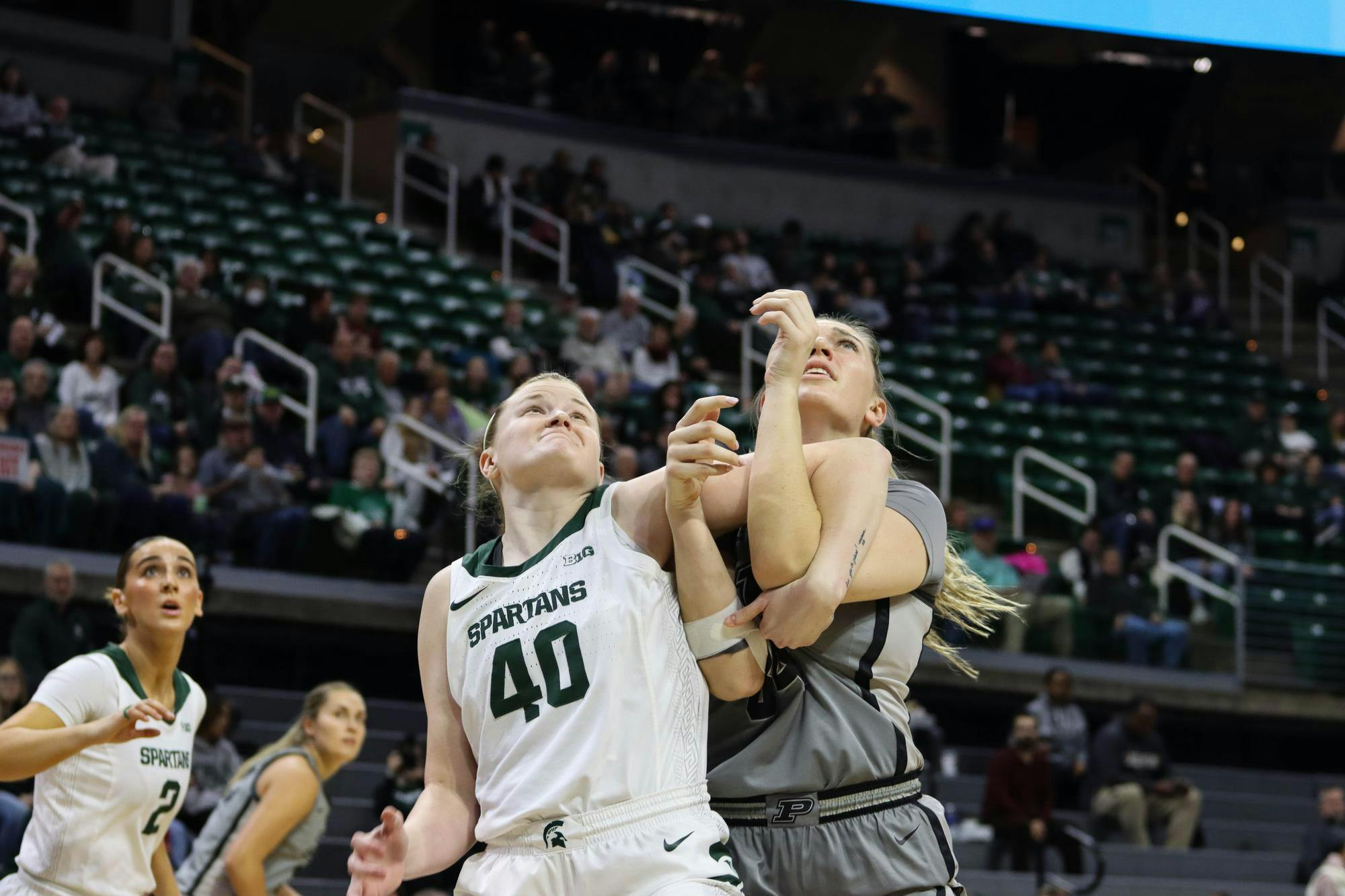
Michigan State Women’s Basketball team takes on Purdue at the Breslin Center in East Lansing on Jan. 24, 2024. Graduate student Julia Ayrault blocks the opponent from making a possible rebound.
